
This segment from PBS News Hour on September 21, 2023, does a nice job of framing the newest mining issue for Minnesota. The video is just under 9 minutes. It’s worth watching, even if you have to watch a PBS ad before you can watch the video.

This segment from PBS News Hour on September 21, 2023, does a nice job of framing the newest mining issue for Minnesota. The video is just under 9 minutes. It’s worth watching, even if you have to watch a PBS ad before you can watch the video.
Netting that was used for on Lake Koronis as part of a pilot project to control starry stonewort is available for free to a good home.
Each net is 300’ long, 6’ deep, and plastic coated. 4 nets are available: 2 nets have 3/8” holes, 2 nets have 3/16” holes. The nets have floats on the top and weights on the bottom. The nets were decontaminated and have been in storage since 2017. Other details are available.
Contact Kevin@Farnum.info if your lake association can use any of these nets for any purpose.
Our Annual Meeting in Little Falls last week was a great success with terrific speakers and insightful discussions! Over 30 people joined us for our first in-person meeting since late 2019.
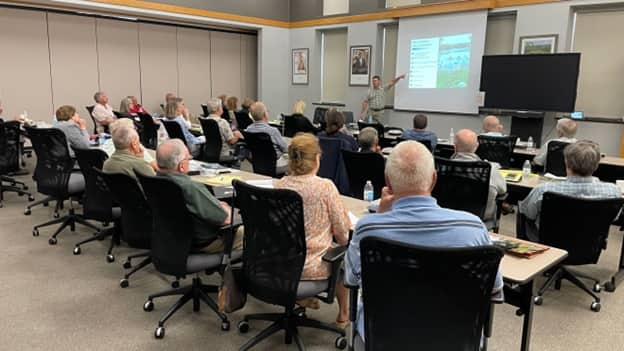
As a follow-up to the meeting, we have attached two items for your use:
At the meeting we unanimously elected 7 new members to the MN COLA Board for 3-year terms, and we are excited to have a full complement of 15 Directors! Our Board Members and their term are listed here. Note that terms end in June of the noted year.
We noted we were doing a “last call” for the 2023 Communications Survey. If you haven’t yet taken the survey, it would be great if you could carve out a few minutes to do it.
The Minnesota Legislature in the 2023 session expanded Minnesota’s existing Boater Education requirements to all boat operators aged 12 and up, born on or after July 1, 1987. MN COLA was a leader in building consensus across a diverse group of stakeholders to help make the law reality.
Click here for more information about this great step forward for safer boating on Minnesota waters.
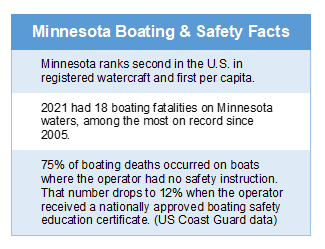
The Minnesota Legislature in the 2023 session expanded Minnesota’s existing Boater Education Program to all boat operators aged 12 and up, born on or after July 1, 1987. Minnesota’s previous boater education requirement was for youth (ages 12-17).
A watercraft operator’s license has been a cornerstone of MN COLA’s Legislative Agenda for years. MN COLA’s consensus building throughout the water community over numerous legislative sessions helped make this law reality.
NEXT STEPS
The MN DNR will be establishing a working group to create and implement the program. The program will cover core safety education in the areas of waterway rules, user conflict reduction, and towing responsibility. It will also provide important lake ecology education on preventing the spread of AIS and understanding how excessive wake height and powerful propeller thrust can negatively impact shoreline erosion, lake bottom habitat, and water quality—all of which are pressing issues for most lakeshore owners. The required boater operator education will help calibrate all Minnesota boaters’ knowledge with
current information and research, and increase the likelihood that users operate their watercraft in an informed, responsible, and respectful manner.
The requirement is phased in and effective:
Other details of the requirement include:
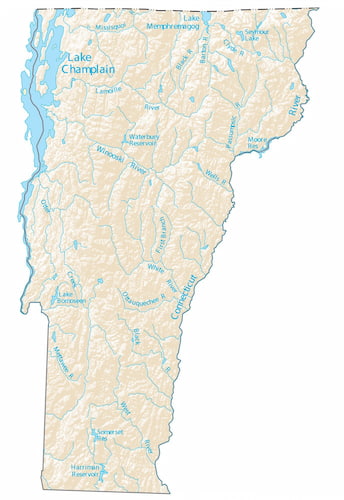
Vermont may soon have the toughest rules in the US for managing wake boats and their activities. Vermont’s rulemaking process is different than Minnesota’s as petitions by the public must be considered. These proposed rule changes were developed by the state in response to a petition submitted in March 2022 from an organization called Responsible Wakes for Vermont Lakes. The Phase 1 wake research done by the St. Anthony Falls Lab at the U of MN was part of the basis for the petition and the state’s proposed rule.
The proposed rule defines a ‘wakesports zone’ as having a minimum of 50 contiguous acres that are at least 500 feet from shore and at least 20 feet deep. The proposed rule also includes a “home lake” approach to help reduce the potential for wake boats to spread AIS from residual water in their ballast tanks.
The petitioners are pleased with the proposed rule but note that the distance from shore is not sufficient as per the U of MN’s peer-reviewed research to reduce the ecological and safety impacts.
MN COLA is proud to have provide input and support for the petition.
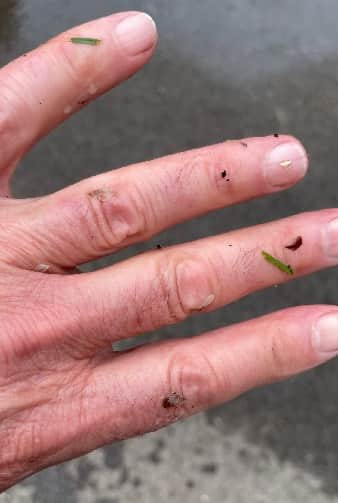
It’s still early in season for AIS detection, but zebra mussels continue their march through Minnesota. As of June 29, 11 new zebra mussel infested water bodies were added to the MN DNR’s Infested Waters List: 6 in Wright County, 2 in Otter Tail County, and 1 each in Hubbard, Kandiyohi, and Stearns Counties.
In addition to these new zebra mussel infestations, Eurasian watermilfoil was confirmed in 1 lake in Le Sueur County and starry stonewort was confirmed in 1 lake in Kandiyohi County.
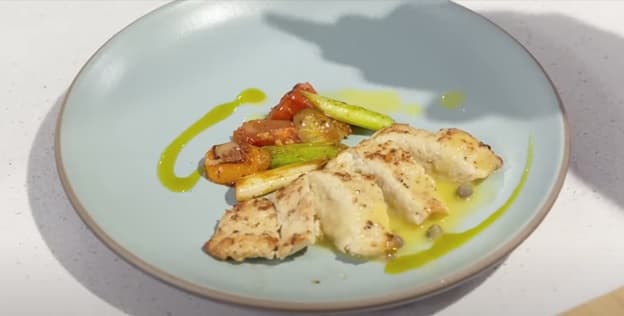
“Cultivated meat requires a fraction of the land and a fraction of the water” so it could potentially help us reduce the impact of our farming practices on our public waters in Minnesota.
This video is from CBS Sunday Morning and was broadcast on July 10, 2023. NPR correspondent Allison Aubrey talks with Dr. Uma Valeti about his company, Upside Foods, which is planning to produce thousands of pounds of cultivated meat from a thimbleful of cells, without having to raise or slaughter animals. Their first commercial product is chicken and the company just received clearance from the USDA to start selling their meat made at their Emeryville, California production facilities.
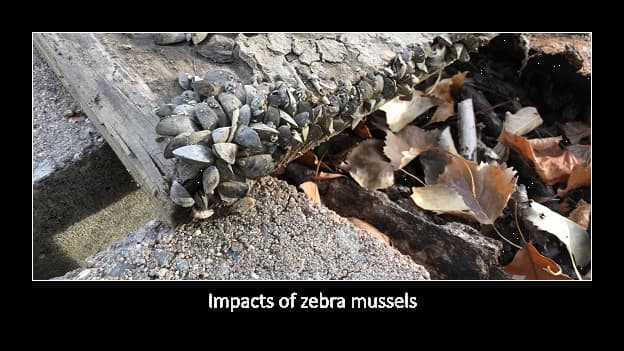
Clearer water from zebra mussels? Yes. Healthier water? NO! But do zebra mussels impact the fish we eat? YES!!!
In their 2022 Annual Report, the University of MN AIS Research Lab (MAISRC) reported some startling findings about “how zebra mussels influence food webs supporting walleye and yellow perch, and how food web changes influence mercury concentrations in fish tissue.”
“Mercury in fish tissue was, on average, 66% higher for adult walleye and 91% higher for adult yellow perch in lakes containing zebra mussels compared to those in uninvaded lakes.
On average, mercury concentrations in 16-inch walleye from lakes containing zebra mussels were 0.28 pm, above the 0.2 ppm threshold triggering human consumption advisories by the Minnesota Department of Health.”
This is really a significant finding, and the MN Health Department advisor should be heeded.
For more information, check out this MAISRC project online at z.umn.edu/AIS-walleye

Together with MN Lakes and Rivers Advocates, we developed this simple one-page informational sheet about AIS in Minnesota. Everyone who uses the water should be aware of Minnesota’s AIS challenges and we encourage you to send it to your members, family, and friends.

The University of Minnesota AIS Research Center (MAISRC) held their first Lab to Lakes Regional workshop on June 23 and 24 in Cass County Minnesota. A wide variety of sponsors helped make this workshop a success (see graphic below.)
After a stirring perspective on the concerns for protecting the water from a leader of the Leech Lake Band of Ojibwa, MAISRC Director Nick Phelps outlined the 2-day conference. Day 1 provided some highlights of MAISRC Lab projects of specific interest to the local geography, discussions of several local AIS success stories, and ending with a panel discussion on civic governance… a requirement for making projects happen in the complicated control for water. Day 2 was reserved for field trips to see project results in action.
It was great to see the lake associations working side-by-side with government organizations to protect the precious public waters of the area.
MN COLA was recognized several times in the discussions, and we were pleased to be a supporting sponsor. Jim Kutzner, Jim Gray, Blaine Barkley, and Joe Shneider attended on behalf of MN COLA.
